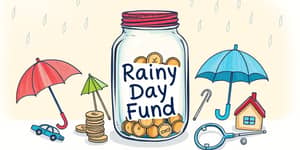Debt can feel like a weight pulling you down, leaving you anxious each time bills arrive. Tackling multiple balances with high interest can erode confidence and make it hard to see a clear path forward. By choosing the right consolidation strategy, you can lift that burden, simplify your monthly payments, and regain control of your financial narrative.
When executed thoughtfully, debt consolidation does more than merge balances—it offers a chance to rebuild healthy habits, reduce stress, and set measurable goals. This article will guide you through every aspect of consolidating debt without undermining your credit score, empowering you to make informed, lasting decisions.
Understanding Debt Consolidation
Debt consolidation refers to combining multiple liabilities into a single repayment plan. That plan can take the form of a personal loan, balance transfer credit card, home equity product, or debt management plan. The primary goal of consolidation is to streamline payments and cut overall interest costs.
By bundling debts, you transform scattered obligations—each with its own due date and rate—into one predictable payment. This clarity can serve as a powerful motivator, reducing the likelihood of missed deadlines and late fees.
Consider Jane, who carried $15,000 across three credit cards, each charging more than 22% APR. Overwhelmed by rotating minimum payments, she felt trapped. After researching her options, she secured a fixed-rate consolidation loan at 8% APR. She immediately reduced her monthly outlay and started seeing real progress as her remaining balance shrank faster than before.
Popular Methods to Consolidate Debt
- Consolidation Loans: Personal loans from banks, credit unions, or online lenders designed to pay off existing debts. These loans offer fixed rates and a clear payoff date.
- Balance Transfer Credit Cards: Cards featuring 0% APR introductory periods—often up to 21 months—allow you to shift high-interest balances with little to no interest, though balance transfer fees may apply.
- Home Equity Products: Home equity loans or HELOCs can provide low rates by securing the debt against your home. Exercise caution
- Debt Management Plans (DMPs): Nonprofit credit counseling agencies negotiate lower rates with creditors and establish a structured monthly payment that you make to the agency, which then distributes funds to your creditors.
Each option carries unique advantages and trade-offs. A consolidation loan offers predictability, while a balance transfer gives temporary relief at the cost of potential fees. Using home equity can be cost-effective but risky, and DMPs often deliver professional guidance and accountability.
Credit Score Implications
Consolidation can produce both short-term dips and long-term gains in your credit score. Recognizing these effects allows you to plan accordingly and avoid panic if your score fluctuates.
Temporary Effects: A hard credit inquiry typically lowers your score by just a few points and fades within months. Opening a new account may also shorten your average credit age, accounting for 15% of your FICO score.
Potential Risks: Closing old, paid-off accounts can reduce your available credit, spiking your credit utilization ratio. Accumulating new balances on cleared cards can also offset any utilization gains.
Potential Benefits: Making consistent, on-time payments builds payment history (35% of your FICO score) and paying down revolving debt slashes utilization (30% of your score). Over time, adding installment credit can diversify your credit mix and bolster your profile.
According to recent data, average credit card APRs exceed 20%. Consolidation loans for qualified borrowers often range between 6% and 12%, and balance transfer cards may offer 0% APR for up to 21 months. This significant rate differential can shorten your payoff timeline and save thousands in interest.
Steps to Consolidate Without Hurting Credit
- Inventory Your Debt: Document every balance, rate, and monthly minimum to grasp your total unsecured debt.
- Compare Options: Evaluate interest rates, fees, and term lengths across consolidation loans, balance transfers, and DMPs.
- Pre-Qualify Where Possible: Use soft inquiries to gauge loan or card offers without impacting your score.
- Avoid Closing Old Accounts: Keep paid-off cards open to preserve your credit utilization ratio and maintain account age.
- Automate Payments: Schedule automatic payments to maintain consistency and build a positive payment history.
- Resist New Debt: Do not rack up charges on cleared cards; reinforce spending controls and stick to your budget.
- Monitor Regularly: Check your credit report to track improvements and spot inaccuracies early.
Mapping out these steps in writing transforms them from abstract ideas into concrete commitments. Reminders and automation ensure you stay aligned with your payoff schedule, while monthly credit checks empower you to adjust strategies as needed.
Avoiding Common Pitfalls
One of the biggest mistakes borrowers make is viewing consolidation as a quick fix rather than a tool for lasting change. Without addressing the spending behaviors that led to debt—such as impulsive purchases or lax budgeting—you risk falling back into old patterns.
Be wary of teaser APR offers that expire after a set period. If your balance isn’t zero when the promotional window closes, your remaining debt can revert to high rates, sometimes above 25% APR. Always plan for how you will tackle the full balance before the introductory period ends.
Actionable Tips for Long-Term Success
- Create a Realistic Budget: Align your income and expenses so you can pay more than the minimum and accelerate debt payoff.
- Seek Professional Guidance: Nonprofit credit counselors offer free advice on budgeting, debt strategies, and credit improvement.
- Use Consolidation as a Fresh Start: Track every expense, categorize spending, and adjust your plan to avoid overspending.
- Celebrate Milestones: Recognize each payoff milestone—whether a paid-off card or loan—to reinforce positive behavior.
- Set Future Goals: Plan to build an emergency fund, optimize your credit mix, and work toward longer-term objectives like buying a home.
These tips aren’t one-time fixes but ongoing habits. Regularly revisiting your budget ensures you adapt to changes such as career shifts, life events, or unexpected costs. Consistency is key to maintaining momentum and securing lasting financial health.
Myths vs. Realities
Myth: Consolidation always hurts your credit. Reality: Any score dip is temporary and often outweighed by the benefits of lower interest and consistent payments.
Myth: You must close old accounts. Reality: Keeping them open helps you maintain a higher total credit limit and supports a low utilization ratio.
Myth: Debt consolidation erases debt. Reality: It reorganizes payments and reduces interest, but the full amount still must be repaid under the new plan.
Myth: You need perfect credit to qualify for low rates. Reality: Many lenders and nonprofit programs work with a variety of credit profiles and offer tiered solutions.
Conclusion: Empower Your Financial Future
Consolidating debt without damaging your credit is entirely possible when you proceed mindfully. By reducing interest expenses, simplifying payments, and maintaining healthy habits, you pave the way to a bright financial horizon.
Each payment you make under your consolidation plan is a victory in reclaiming freedom. Stay informed, remain disciplined, and know that the steps you take today will echo through your financial future. You have the power to reshape your credit story—start now, stay committed, and celebrate every milestone on the journey ahead.
References
- https://www.experian.com/blogs/ask-experian/can-debt-consolidation-affect-your-credit-score/
- https://www.equifax.com/personal/education/debt-management/articles/-/learn/what-is-debt-consolidation/
- https://www.nerdwallet.com/article/loans/personal-loans/does-debt-consolidation-hurt-credit
- https://www.citi.com/personal-loans/learning-center/debt-consolidation/how-does-debt-consolidation-affect-your-credit
- https://bankruptcylawjax.com/will-debt-consolidation-ruin-my-credit/
- https://www.incharge.org/debt-relief/debt-consolidation/consolidate-debt-without-hurting-credit/
- https://www.onemainfinancial.com/resources/debt-consolidation/how-does-debt-consolidation-affect-your-credit
- https://www.experian.com/blogs/ask-experian/consolidate-debt-without-affecting-credit/










